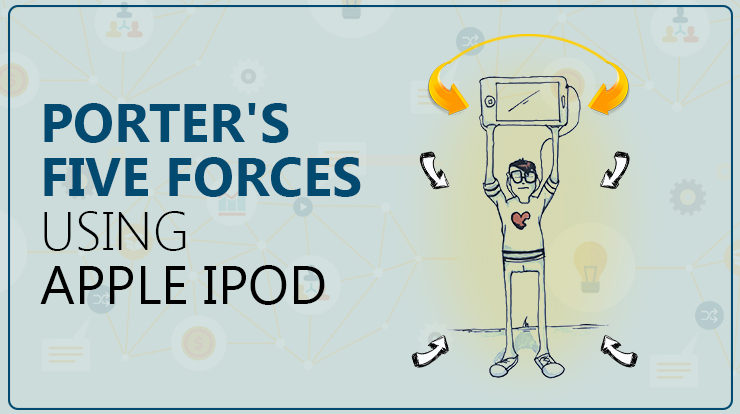
Businesses are not run in isolation. A business is comparable to a living creature that breathes and lives its own life. A business is a part of a subset which includes other similar businesses which is what we call an industry.
A business interacts with other businesses and with customers in order for it to function well. And the health of these interactions determines the fate of the business.
But let’s get to the moot point.
What is that one (obvious) objective that businesses are run for?
Profitability.
Successful and the most profitable businesses in the 21st century constantly focus on differentiating themselves in the market. Michael Porter’s analytical tool, well known as Porter’s Five Forces, is widely used by the current management to formulate strategies. This model identifies five forces that define every industry and determine the profitability.
The Porter’s Five Forces has become the most preferable business strategy tools. This model encourages you to identify other factors in the macro-business environment that affect your actions besides your competitors. This model identifies five factors that constitute the competitive environment and influence your profitability.
What is the importance of Porter’s Five Forces in your organization?
This model tells you that one extremely important thing, the profitability of your industry. How it tells that to you is by considering nature of your industry and the kind of interactions you have with the stakeholders. You can understand the factors that affect your ability to serve your customers and your profit levels. If there is any change in these factors, you will have to re-evaluate the market conditions.
How do Porter’s Five Forces help a Marketeer?
This information will assist you to identify your position in the market. You can assess your level of operations with those of their competitors. You can improve your position by exploiting the weaknesses of your rivals. Also, you will be able to develop strategies that will improve your profitability and growth. You will assess your competencies and business network to formulate strategies that will improve your profitability levels.
What are Porter’s Five Forces?
The five forces of Porter’s Five Forces are the buyer and supplier power, threats of new entrants and substitutes, and rivalry.
These components identify the elements that contribute to the competitive advantage of an organization: the demand and factor conditions, company strategies, and supporting industries.
When analyzing the buyer power, you should assess the switching costs for your customers, their numbers, and the number of their orders. Or simply put, how much and what all would you lose if only one (and only one) buyer leaves you forever, never to return.
If such a scenario really sends jitters down your spine and such a buyer leaving does take away a sizeable chunk of your profit, the buyer power in your case is really high.
The bargaining power of suppliers depends on the uniqueness of their services, your ability to substitute them, and switching costs. Also, your number of suppliers and their size influences their power. Supplier power greatly affects the quality of your products and your profits.
Threats of substitutes depend on you the performance of your products and the costs of changing from one product to another. This force could be strong, weak, or moderate depending on the how well your product delivers value. It poses a significant threat to your position in the market and affects your profits.
Organizations that seek to enter a new industry assess the costs and barriers to entry, the cost advantages, and expert knowledge. They need to evaluate the technology and time of entry. Simply put, the threat of new entrants depends on your position in your industry.
If you have technology and processes that aren’t replicable easily, you have a considerable lesser threat of new entrants in the industry.
These four forces of the porter’s model influence the rivalry of your industry. The fifth force is the rivalry and competition among the industry. Competition relies heavily on customer loyalty, differences in quality, switching costs, and the number of competitors. When analyzing this factor, you must scrutinize the strengths and number of your competitors.
How then do you use Porter’s Five Forces as a strategic tool in your organization? Apple iPod. will help you in understanding how to implement this model in your company.
Porters Five Forces in Apple iPod
Apple is the leading company in the digital music industry. It has been able to struggle through the tough financial times it faced in the 1990s to become a successful brand. Apple has developed strategies that deal with the forces in the external environment.
Apple is a famous brand in producing iPhones, iPods, iTunes, and the Mac OS and computers. Apple iPod is the leading device in the portable music segment.
This device was launched in 2003 to play iTunes music downloads and improved the brand image of Apple Inc.
In what ways do Porter’s Five Forces influence the profitability and competition of Apple iPod?
Buyer Power
The bargaining power of buyers is significantly low. In the case of Apple, it is clear that be it any logic that there may be with Apple for pricing their products the way they do, a consumer is the last consideration for them.
The consumers don’t determine the price of an Apple iPod. The price is not demand-sensitive, at least whenever a new iPhone comes out.
Apple sells the iPods that play digital content like movies and music. It then provides customers with the content to listen, therefore, reducing their power.
The switching costs for customers is high as the content purchased from iTunes cannot be transferred to other non-Apple devices.
The Apple iPod has been able to create a difference in its customer approach. This device is simple and has a human touch. Apple’s competitors were unable to acquire the iPod tech as it has property rights that limit its acquisition.
Supplier Power
When talking about the suppliers of Apple iPod, I want you to think of those providing music.
Apple has been strategic at reducing the bargaining power of suppliers. It was careful to establish a long relationship with its suppliers.
Apple entered into partnerships with large recording companies like BMG, Universal, Sony Entertainment, and Warner to address their piracy concerns. In fact, suppliers prefer their music to feature on iTunes as it exposes them to a large audience, unlike its competitors. The company conducts supplier audit checks to exercise its bargaining power.
Threats of New Entrants
Apple has been able to retain the threat of new entrants low for a significant period.
First, the company possesses technology that will take forever for a new entrant to replicate. In fact, some of its core features are heavily guarded by patents and copyrights. Second, Apple has a unique brand image that is difficult to imitate overnight.
Google could pose a significant threat to the iPod as it controls a large percentage of the smartphone Android operating system. If this company decides to enter the music industry by developing a store similar to iTunes, it could pose a threat. However, this is just a speculation.
Apple relies on its brand image and loyalty to control this threat. The threats of new entrants for Apple iPod is significantly low as it keeps pace with technological change. The company constantly develops new versions of the iPod which people relate with and purchase.
Threats of Substitutes
There are numerous substitute brands in the smartphone market that increase the threats facing Apple iPod. Smartphones have become a major substitute for the Apple iPod. Companies like Google and Samsung have developed smartphones that allow people to listen to music.
The presence of MP3 players poses a significant threat to the iPod. Apple was able to mitigate this threat by developing the iPhones. This smartphone has a comprehensive entertainment package including internet, photos, music, and videos which have helped retain the legacy of the iPod.
Rivalry
The technological industry has large brands that intensify competition. The Apple iPod is a leader in the digital music arena despite the stiff competition it faces from Spotify and Pandora.
The iTunes store is the leading provider of digital music in the US. The Apple iPod undergoes constant improvement and maintains low prices to mitigate competition.
Conclusion
You have noticed that Apple iPod has been keen to tactfully utilize its resource in each of Porter’s Five Forces. You should be able to analyze each of the five forces in your organization and find ways of mitigating the threats they present. The findings of this model will help you to develop good strategies for your company.






